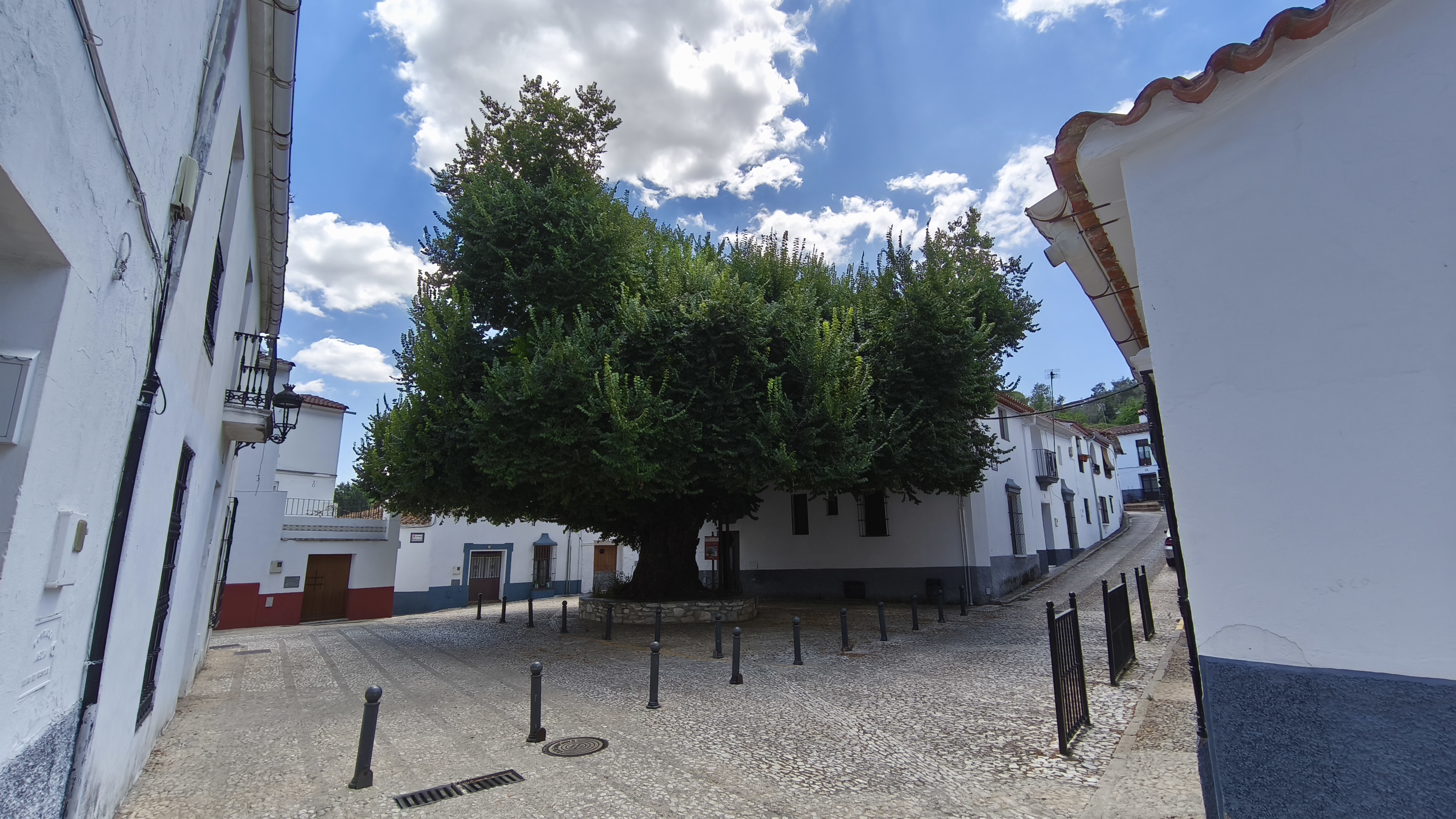History of Cortelazor la Real
Cortelazor la Real is a picturesque municipality in the province of Huelva, nestled in the Sierra de Aracena and Picos de Aroche Natural Park. Its history dates back to prehistoric times, with evidence of human occupation since the Bronze Age. Over the centuries, various civilizations have left their mark on this beautiful corner of the Sierra de Huelva.

Origins and Etymology
The earliest archaeological remains in the area date back to the 2nd millennium BC, with findings in places such as the Sierra del Cuchillar and the Cañada de los Domínguez. During the Roman era, a settlement was established near the present-day Sanctuary of Nuestra Señora de la Coronada, where coins from the Emperor Augustus and other relics have been found.
The origin of the name Cortelazor is uncertain. Some historians suggest that it derives from the "Court of King Azor," an Arab leader from the time of the Taifa kingdoms, while other theories link it to falconry, an activity practiced in the area.
Incorporation into the Crown of Castile and Historical Evolution
After the Christian conquest by Alfonso X the Wise, Cortelazor became part of the Crown of Castile, under the jurisdiction of Aracena. In 1631, Philip IV granted it the title of a town, allowing it administrative independence in exchange for a payment of 2,000 ducats.
The town faced ups and downs during the 17th century due to war conflicts and tax pressures. In 1713, the population had dwindled to 30 households, but by the late 18th century, it had reached 559 inhabitants, thanks to agriculture and livestock farming.
The 19th century was a period of growth, with a population reaching 910 inhabitants in 1887. The economy was based on livestock farming, cork production, and charcoal extraction.
Transformations in the 20th Century
The 20th century brought significant emigration, especially after the Civil War and during the 1950s. Despite this, the town achieved notable advancements, such as the construction of the Civil Guard Barracks in 1923 and the new Town Hall in 1934. The arrival of electricity also marked a turning point in the lives of its inhabitants.
In recent decades, the economy has diversified with Iberian pig farming, construction, and rural tourism, with mushroom and chestnut harvesting standing out as complementary activities.
Heritage and Culture

Cortelazor la Real boasts valuable historical heritage, including the Church of Nuestra Señora de los Remedios, built in 1565 and expanded in the 18th century. Inside, "La Divina Pastora," an 18th-century painting attributed to Alonso Miguel de Tovar, is preserved.
Another symbol of the town is its centennial elm, where town council meetings were once held. Additionally, the Sanctuary of Nuestra Señora de la Coronada is a place of great archaeological and devotional value.
Cortelazor Today
Today, Cortelazor la Real maintains its traditional essence and natural beauty, attracting visitors seeking tranquility and contact with nature. Its privileged location makes it an ideal destination for hiking and rural tourism. Its economy remains based on livestock farming and tourism, solidifying its status as a hidden treasure in the Sierra de Huelva.
With a fascinating historical legacy and an unparalleled environment, Cortelazor la Real continues to be an essential destination for those wishing to experience authentic life in the Sierra de Aracena.
 Vive Cortelazor
Vive Cortelazor  English
English  Español
Español 